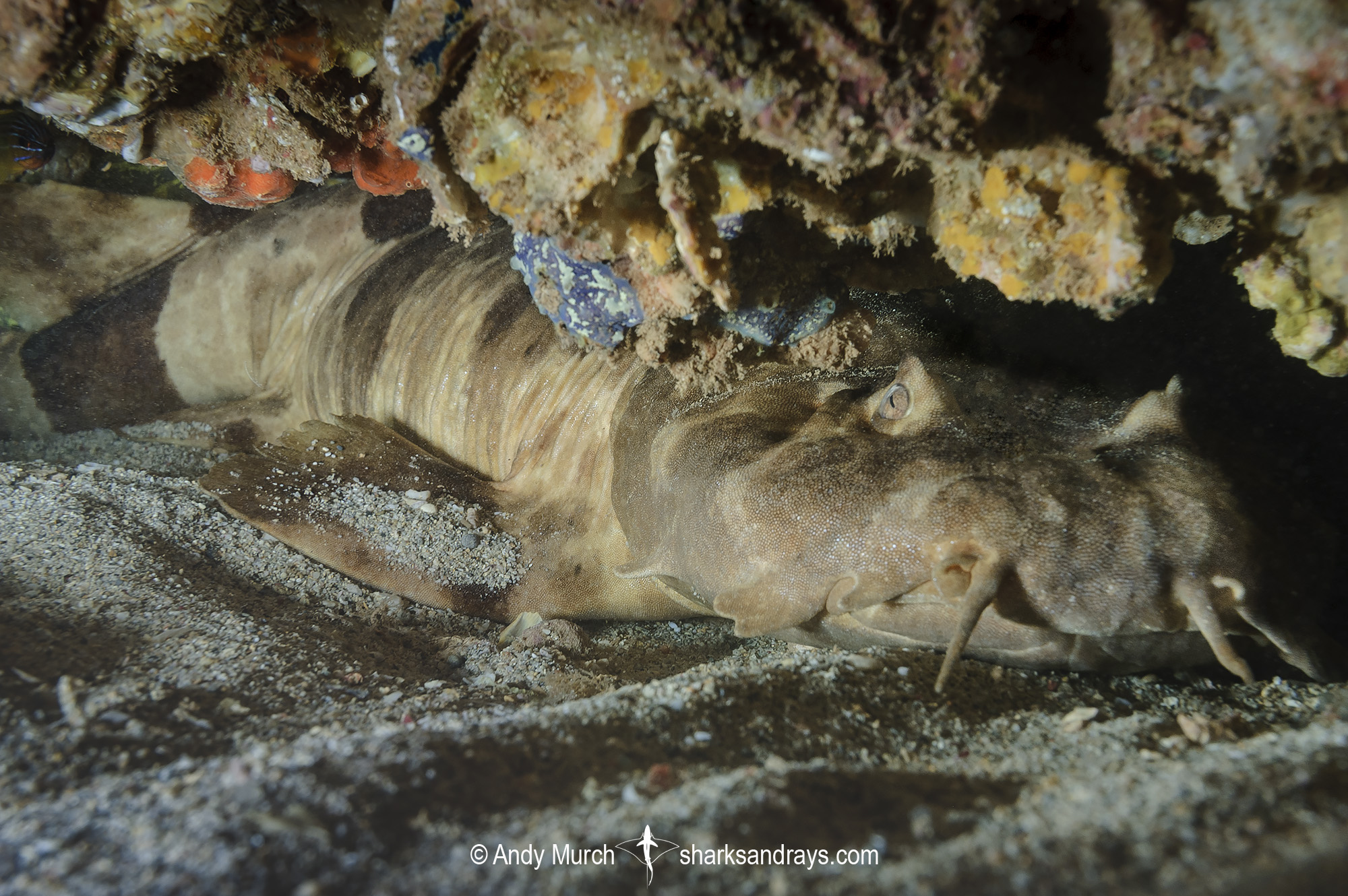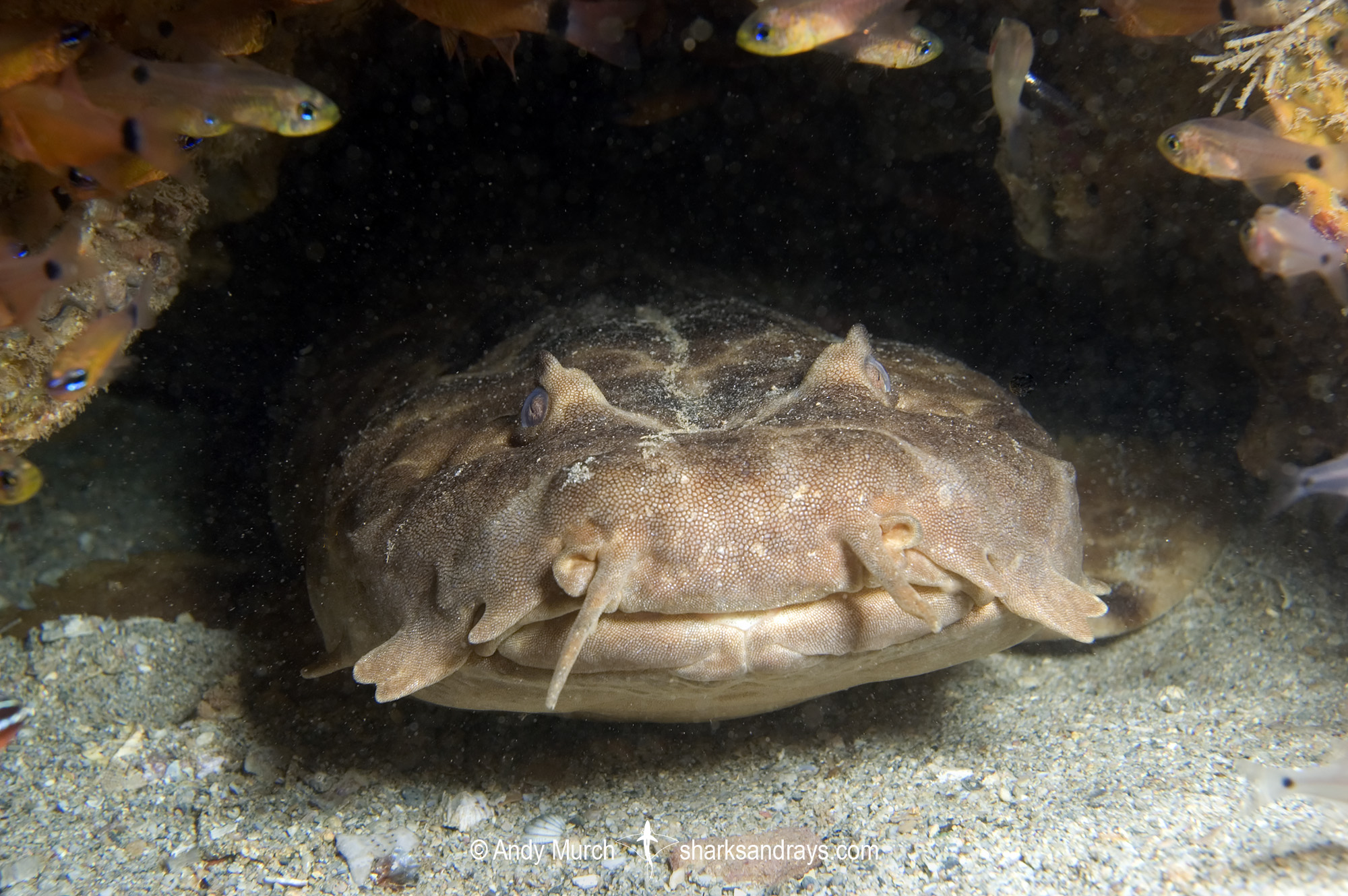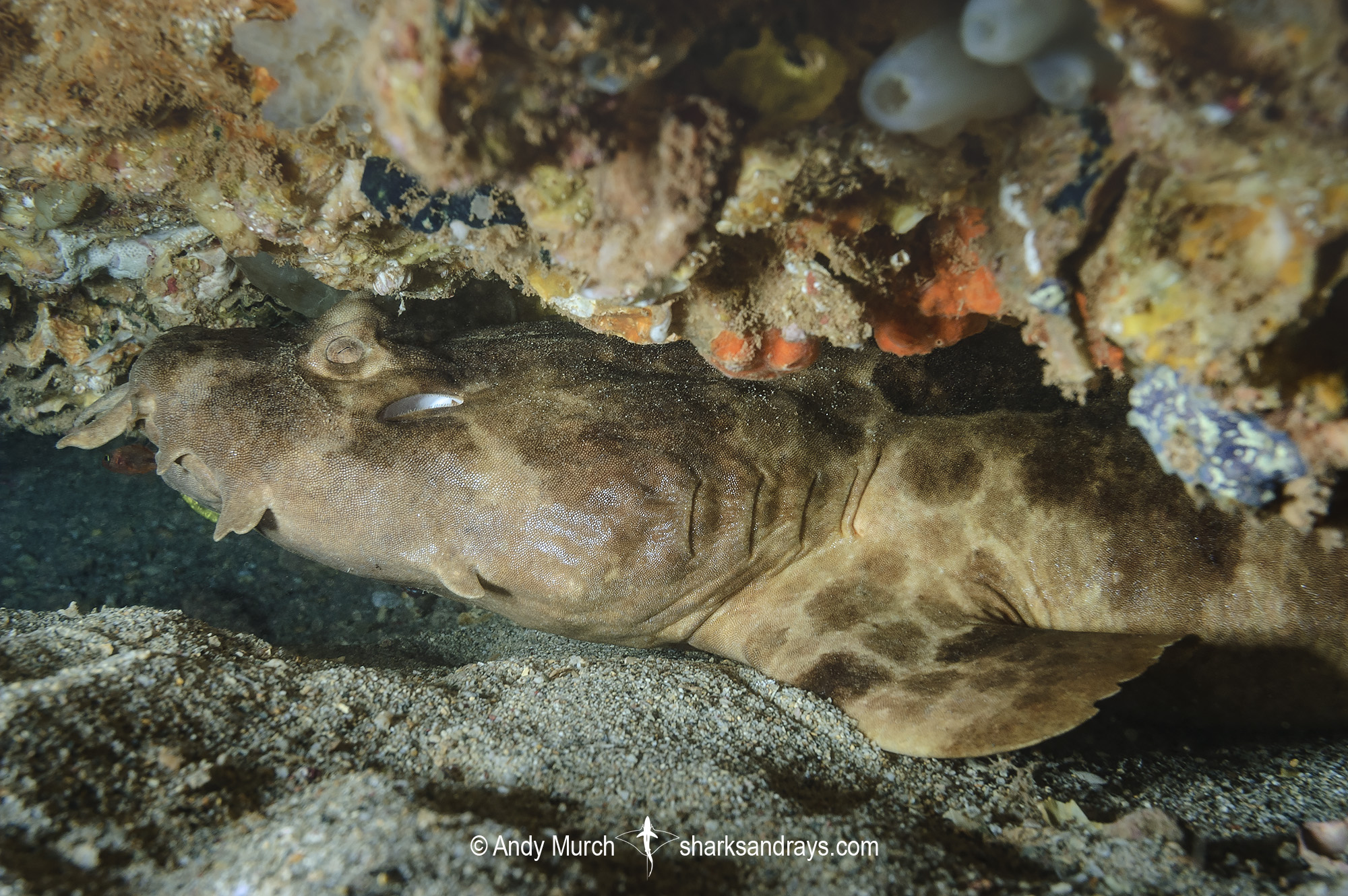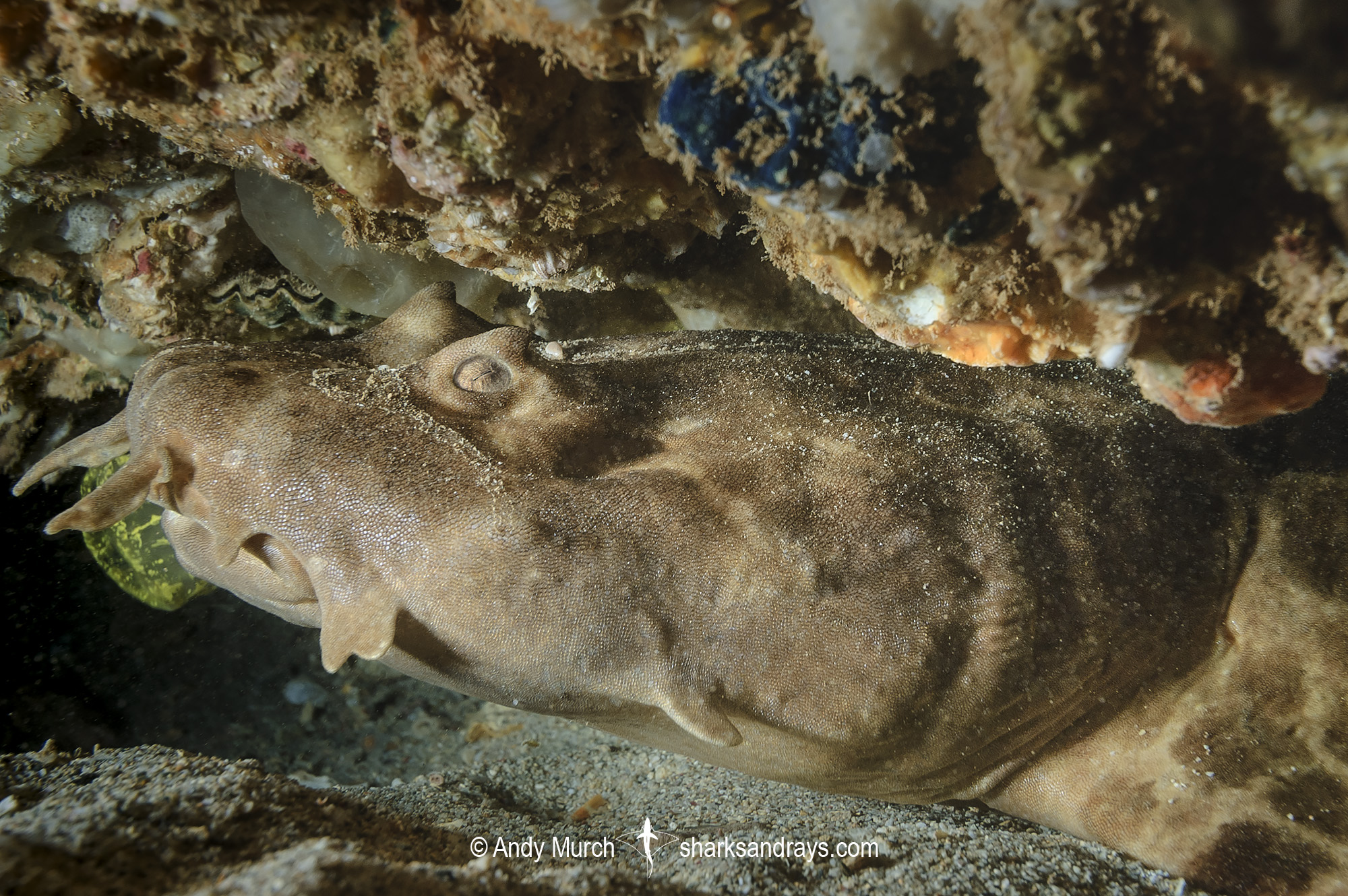Common names
Northern Wobbegong, Ward’s Wobbegong.
Binomial
Orectolobus wardi.
Synonyms
Sutorectus wardi.
Identification
A small species of wobbegong. Nasal barbells unbranched. Two unbranched preorbital dermal lobes and two wide, unbranched post-spiracular dermal lobes.
Two equally sized, large dorsal fins. First dorsal origin over pelvic fin insertion.
No warty tubercles on head or body. Dorsal colour pattern simpler than other wobbegongs. Five dark saddles/bands with pale margins on head and torso. Saddles separated by a network of lighter spots and blotches with pale margins.
Size
Maximum verified length 63cm. Possibly up to 100cm. Size at birth unknown.

Conservation Status
LEAST CONCERN
The Northern Wobbegong is not considered to be a species complex. Data on each potential species within the complex is not available, but there is very little fishing pressure on the complex as a whole and no reason to assume population depletion.

Habitat
Tropical seas. Prefers shallow coral or rocky reefs, usually in turbid water.
Distribution
Found on the northern coast of Australia, from Coral Bay and Ningaloo Reef in W.A. to Cape York in northern Queensland. Possibly also present in southern Indonesia and PNG.
Reproduction
Ovoviparous. Presumably lecithotrophic, (wherein the foetus is solely nourished by the yolk within the egg case) like other wobbegongs. Reproductive cycle poorly known.
Diet
Feeds on small bony fishes and invertebrates.
Behavior
Nocturnal. Rests by day under reef ledges, usually in turbid water.
Reaction to divers
Easy to approach (once finally located). Remains at rest, relying on camouflage unless harassed.
CAUTION: Wobbegongs have been reported to have bitten divers that got too close to their mouths, even when not disturbed.
Diving logistics
The northern wobbegong is occasionally seen on Ningaloo Reef but the easiest place to locate one is probably the navy pier at Exmouth, W.A. This area is at the southwestern edge of this species range so it may be more common further north and east but conditions become increasingly more turbid as one travels north from Exmouth.
What’s new
View our full list of updates
Similar species
Network Wobbegong Quite similar but distinguished by dark saddles containing eye-sized black spots, and black spots on the pectoral fins.
Northern Wobbegong Complex O. wardi appears to be part of a species complex that may be split into more species once further research has taken place.


